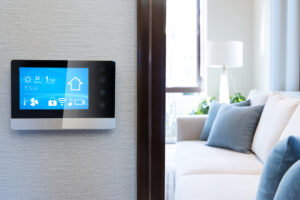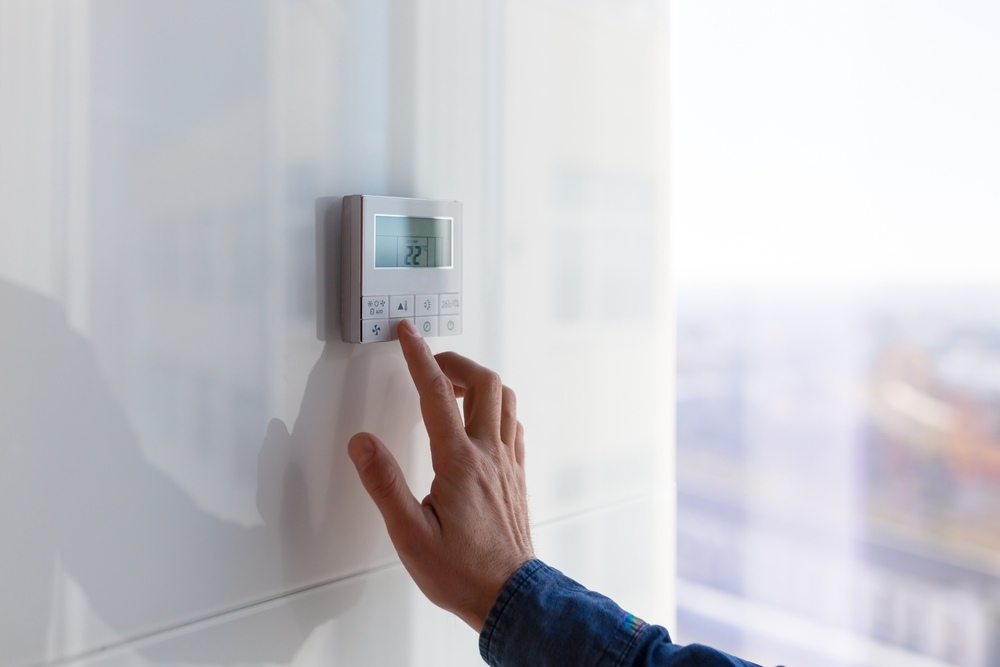Summer is here, and we all know what that means—beach trips, barbecues, and of course, the inevitable battle to keep our living spaces and cars cool and comfortable. Whether you’re behind the wheel or in your cosy home, you might find yourself asking, “What’s the Difference Between Air Conditioning and Climate Control?” or perhaps “Manual vs. automated climate control, which is better?” In this blog, we’re expanding our horizons to include not just your living spaces but also your vehicles, answering all these burning questions and more. Let’s get started!
What is Air Conditioning?
Air conditioning, commonly abbreviated as AC, is a system designed to cool, circulate, and sometimes dehumidify air in a confined space. Originating as a way to improve indoor air quality, air conditioning has become synonymous with comfort and convenience in daily life. Whether it’s a scorching summer day or a humid tropical evening, air conditioning works by removing heat and moisture from the interior of an occupied area.
This process is accomplished through a cycle of evaporation and condensation, utilising a refrigerant—a chemical fluid that easily transitions between gas and liquid states—to absorb and release heat. The goal is to create a more comfortable indoor environment, not just for humans but also for animals and even electronic devices that require a stable temperature for optimal performance. With a variety of applications from residential and commercial buildings to vehicles and industrial spaces, air conditioning is an essential part of modern life.
Manual Air Conditioning
When we talk about manual air conditioning, especially in cars, we refer to systems where you have to adjust the settings yourself. This contrasts significantly with automated systems, forming the crux of the “air conditioning vs. climate control” debate.
Components of an Air Conditioning System
If you are interested in knowing about the air conditioning system, you must know about the component. Let’s explore them.
Evaporator: Cools the air by evaporating a liquid refrigerant.
Condenser: Releases the captured heat into the outdoors.
Compressor: Pressurises the refrigerant, preparing it for the cooling cycle.
Expansion Valve: Regulates the flow of the refrigerant into the evaporator.
Air Filters: Catch dust and debris to purify the air.
Fans: Help in circulating the cooled air into the room or car cabin.
Controls: Manual or basic automated controls for temperature adjustment.
How Air Conditioning Works
The air conditioning process is relatively simple but effective. The evaporator cools down the air that flows over it, while the compressor and condenser work in tandem to extract and release heat from that air. This process also applies to car cabin temperature regulation, albeit on a smaller scale.
Applications of Air Conditioning: From Homes to Cars
- Residential: Ideal for apartments and houses.
- Commercial: Offices, retail stores, and restaurants.
- Industrial: Factories and warehouses.
- Automotive: Basic manual air conditioning can also be found in older or budget-friendly cars.
What is Climate Control?
Climate control is like air conditioning but on steroids! It does more than just cool your room or car; it’s a smart system that keeps everything just the way you like it. Imagine stepping into your car on a cold winter day and finding it warm and toasty, or coming home to a house that’s the perfect level of cool during a heatwave. That’s what climate control does. It uses sensors to check the temperature, humidity, and even air quality, then automatically adjusts everything to keep you comfy. Some systems even let the driver and the passenger in a car have their own “climate zones.” So, while air conditioning is like having a fan, climate control is like having a personal weather fairy!
Automated Climate Control
Unlike manual air conditioning, automated climate control adjusts the temperature and other environmental factors automatically. Dual-zone climate control, commonly found in cars, allows the driver and passenger to set their preferred conditions independently.
Components of a Climate Control System
If you want to learn about the climate control system, you must know about its components. Let’s learn more about them.
- Temperature Control: Automated heating and cooling systems integrated into one.
- Humidity Control: Humidifiers and dehumidifiers maintain optimal moisture levels.
- Air Quality Control: Advanced filters and UV lights to eliminate pollutants.
- Sensors: Monitor and adjust internal conditions for a consistent environment.
- Zoning: Dual-zone or multi-zone options, especially in cars, for individual comfort.
How Climate Control Works

Climate control is like your own personal weather manager, always working behind the scenes to make sure you’re comfortable. So how does it do all that? Let’s break it down in easy words.
First off, climate control systems use a bunch of smart sensors that are always checking things like the temperature, humidity, and sometimes even the air quality inside your space or car. These sensors send this info to a computer, which figures out if it needs to cool things down, heat things up, or maybe even get rid of some humidity.
Once the computer knows what to do, it sends instructions to different parts of the system. If it’s hot and muggy, the climate control might turn on the air conditioner to cool things down and use a dehumidifier to pull moisture out of the air. If it’s cold, it’ll crank up the heat. Some advanced systems can even purify the air, getting rid of any dust or allergens floating around.
The cool part? All of this happens automatically. You don’t have to fiddle with dials or buttons constantly. You just set your preferred temperature at the beginning, and the system takes care of the rest.
In cars, some climate control systems are even fancier, offering what’s called “dual-zone” or “multi-zone” control. That means the driver and passengers can each set their own comfort levels. So, if you like it cooler and your co-pilot wants it a bit warmer, everyone gets what they want!
So, in a nutshell, climate control keeps your space just the way you like it by constantly checking and adjusting the temperature, humidity, and air quality. It’s like having a comfort concierge always on duty!
Applications of Climate Control: From Premium Homes to Modern Cars
- Residential: Houses that require comprehensive environmental control.
- Commercial: Art galleries, museums, and high-end office spaces.
- Automotive: Modern cars featuring dual-zone or multi-zone climate control systems.
Key Differences Between Air Conditioning and Climate Control
| Feature | Air Conditioning | Climate Control |
| Temperature Regulation | Manual, limited automation | Fully automated |
| Humidity Control | Limited or none | Comprehensive |
| Air Quality | Basic or medium filtering | Advanced, sometimes medical-grade |
| Energy Efficiency | Standard to high | Generally higher |
| Cost | Lower upfront, higher maintenance | Higher upfront, lower maintenance |
| Maintenance | Easier but more frequent | More complex but less frequent |
| Complexity | Less complex, easier to install | Requires professional installation |
| Car Temperature Control | Manual systems in older cars | Automated systems with dual-zone control |
Air-Con System Differences in Cars
When it comes to differences in car temperature regulation, the table above becomes especially relevant. The manual vs. automated car climate control debate can affect your driving comfort dramatically. Manual systems are less complex but offer less fine-tuned control, while automated systems offer individualised comfort but can be expensive and complex to maintain.
Advantages and Disadvantages of Each System
Both air conditioner and Air Conditioning and Climate Control have some advantages as well as disadvantages. You must know about the good and bad side of each system to know which one is best for you.
Advantages of Air Conditioning
- Lower Upfront Cost: Ideal for budget-conscious consumers.
- Easier to Maintain: Simpler systems mean easier DIY maintenance.
- Wide Application: From small apartments to cars and large factories.
- Quick Cooling: Excellent for immediate temperature drops.
Disadvantages of Air Conditioning
- Limited Control: Provides mainly temperature adjustments.
- Higher Running Costs: Less energy-efficient models can rack up bills.
Advantages of Climate Control
- Complete Control: Adjust almost every environmental factor.
- Improved Comfort: Perfect for both home and car HVAC systems.
- Energy Efficiency: Smart systems optimise power use.
- Less Frequent Maintenance: Built to last, especially in modern cars.
Disadvantages of Climate Control
- High Upfront Cost: Sophistication comes at a price.
- Complex Maintenance: Specialised servicing may be needed, especially for car climate control options.
Which System is Right for You?
If you are thinking which one is right for you, there are factors to consider.
Consider these factors:
- Climate of Your Region: Extremes in temperature or humidity?
- Size of Your Space or Vehicle: A compact apartment or a luxury car?
- Specific Needs: Allergies? Advanced air filtering could be a boon.
Conclusion
We’ve tackled the often confusing question, “What’s the Difference Between Air Conditioning and Climate Control?” and even delved into manual vs. automated climate control systems. Whether you’re looking for car comfort or home comfort, this guide has hopefully made your decision a little easier.

